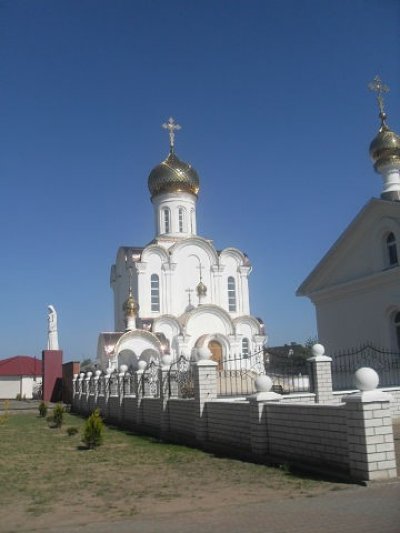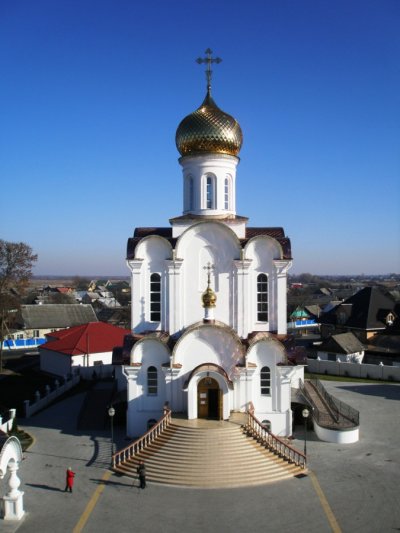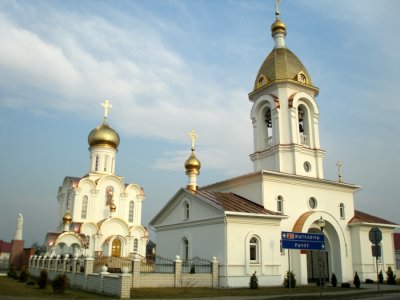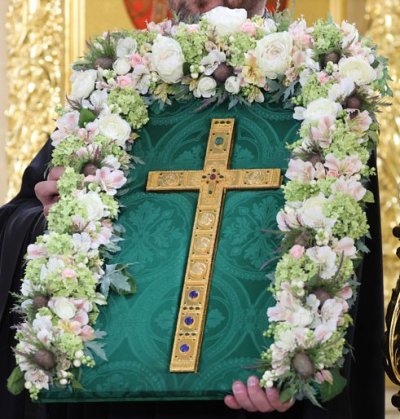The first information about the cathedral in Turov dates back to the XII century. In the XIII century, the majestic temple was destroyed. During the Tatar raids, the former Turov Principality lost its political significance, but did not lose its spiritual authority. At the beginning of the twentieth century, on the initiative of Hieromartyr Mitrofan, Archbishop of Minsk and Turov, fundraising for the construction of the cathedral began. But the outbreak of the First World War, the Bolshevik coup, the civil war and terror delayed the saint's undertaking for a century. The plot for the construction of the cathedral was allocated in 2008 by the personal order of the President of the Republic of Belarus. On November 5, 2009, His Holiness Patriarch Kirill of Moscow and All Russia blessed the construction of the church. On May 11, 2010, Metropolitan Filaret of Minsk and Slutsk laid the foundation stone of the future cathedral. During 2011, domes and crosses were raised on the cathedral, and the foundation of the bell tower was laid. On May 11, 2013, the solemn consecration of the cathedral in honor of Saints Cyril and Lawrence of Turov took place. The cathedral was built in the ancient Byzantine style. The height of the two–storey cathedral together with the cross is 32 meters. The upper church is the abode of Saints Cyril and Lawrence, and the lower one is the abode of the Venerable Boris and Martin Turovsky. The cathedral has nine bells cast in the Russian city of Voronezh. The largest of them weighs 1.3 tons.
On May 2, 2021, President of Belarus Alexander Lukashenko, visiting the Cathedral of Saints Cyril and Lawrence of Turov in the town of Turov on Orthodox Easter, donated to the temple a recreated shrine - the altar cross of Turov, which was lost after the earthquake that destroyed the cathedral in the XIII century. Alexander Lukashenko stressed the symbolism of the fact that one of the sacred shrines of Belarus returns to the main Orthodox church of the town on Easter Day. "Goodness and light always come back to people. Even after centuries," the president said. Work on this cross went on for three years. "On Christmas days, when presenting the prize for Spiritual Rebirth, including to the authors of the restored shrine, I said: life is so short, so let's not waste it on empty talk and destruction," the Belarusian leader said. Alexander Lukashenko noted that as President he was lucky to be involved in the restoration of Belarusian shrines, including the cross of Euphrosyne of Polotsk, and now the Turov Cross. Over the past few years, work has been carried out in Belarus to recreate the altar cross of the Turov diocese of the XII-XIII centuries. It belongs to the votive (altar) crosses of Byzantine and ancient Russian churches. Another famous Belarusian shrine, the cross of St. Euphrosyne of Polotsk, also belongs to them. Back in 1962, during the excavations of the Turov settlement, four lead icons were discovered on the layer of the XII-XIII centuries - The Mother of Jesus Christ and three saints. According to scientists, they were located on the altar cross. The cross itself was the main shrine of the Turov diocese and was kept on the throne of the cathedral of the town. It is known that the temple was destroyed by an earthquake in the first half of the XIII century. In recent years, it was decided to recreate the Turov Cross. The corresponding instruction was given by the President of Belarus Alexander Lukashenko on June 16, 2017 during a visit to the Polessky State Radiation and Ecological Reserve. In August 2019, the concept of the Turov Cross was approved by the then Metropolitan of Minsk and Zaslavsky Pavel, and work on its manufacture began in the autumn. Two identical crosses were made using medieval technologies - for the Diocese of Turov and for the National Academy of Sciences of Belarus.
In the chapel, arranged in the courtyard of the cathedral, one of the two-meter Turov stone crosses is placed. Before that, it was kept in the Turov All-Holy Church, where another cross is still located. According to legend, stone crosses once sailed to Turov along the rivers Pripyat and Dnieper against the current.



